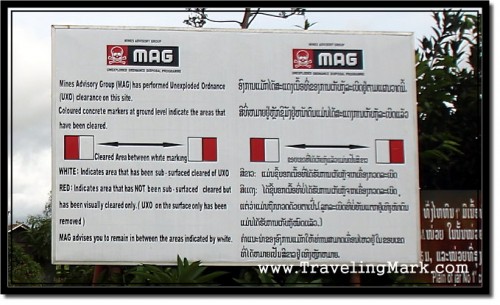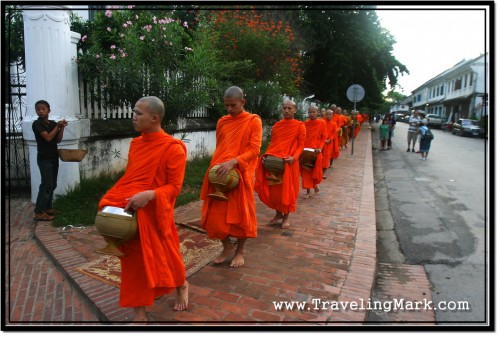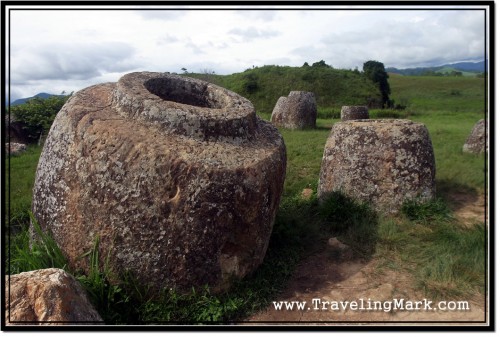Since Lao People’s Democratic Republic is a socialist country ruled by a single party communist government, it’s natural for many westerners to question whether the country is safe to visit. Hidden behind the veil of secrecy, Laos was off limits to westerners for many a decade leaving an impression that internal affairs, which were not watched by international communities could have created a potentially hostile environment that’s risky to enter. Yet despite what you may have thought, Laos is one of the safest countries to visit with people as peaceful and friendly as they get.
When it comes to personal safety, Laos is at the opposite end of the scale from Cambodia. History of Cambodia is riddled with violence and other than a few rarities, the country remains the epitome of violence to this day. The history of Laos on the other hand is the history of peace and other than a few rarities, the nation remains peaceful to this day. It’s astounding how countries that are geographically so close to each other can be so different in terms of personal safety and the way people treat one another. Since I had spent quite some time in Cambodia before coming to Laos, it gave me a chance to compare safety in both countries. Let me clarify how safe to visit Laos is by comparing it to Cambodia.
Laos vs. Cambodia
Having arrived in Laos from Cambodia, a country where violence and scam are part of everyday life, entering into a society where everyday life is highlighted by peace and friendliness felt like when the blood starts flowing again into a limb that was choked off by a tight rope. Fake smiles used as a disguise for shady purposes so typical of Cambodians were gone and all I could see were genuine, inviting smiles full of warmth and honour.
Unlike Cambodians, Laotians don’t stare foreigners down to make them feel like they do not belong in their country. Unlike Cambodians, Laotians don’t sit around whole day too lazy to do any kind of work, but buzz around to make sure their families are provided for. Unlike Cambodians, Laotians won’t kill themselves laughing when something happens to you, but instead will try to help. And unlike Cambodians, Laotians won’t be carefully examining your whole body to estimate what worthy of stealing could be found in your bags or pockets while plotting a strategy to safely move it from being your possession to becoming theirs.
After Cambodia, Laos was a breath of fresh air that made me question (again) why I had wasted so much of my time and money on that country. I felt the same breath of fresh air when I left Cambodia for Vietnam, and when I crossed over through Cambodia to Thailand.
Fool me once, shame on you but fool me twice, shame on me. For some reason, I allowed Cambodia to fool me thrice but with each eye opener, with each new country I have visited after Cambodia, it became apparent that the world is an inviting and friendly place, but as with everything, there always is an exception to the rule. For a worldwide traveller looking for a safe and enjoyable place, based on my experience, that exception is Cambodia. I have been through all of Europe except from Scandinavia (excluding Iceland), all of North and Central America including the islands of the Caribbean, all of South East Asia and some of the rest of Asian continent (adding more to the list by the day), but Cambodia remains the only country out of all I have visited in which I had to fear for my life.
Global Peace Index
According to the 2010 Global Peace Index, Lao People’s Democratic Republic is the 34th most peaceful country in the world. Out of the rest of South East Asia, only Malaysia and Singapore ranked higher than Laos sending clear signal that Laos is a safe country to live in and safe country to visit. For comparison, according to the Global Peace Index, Cambodia ranked as the 111th most peaceful country in the world, which basically confirms that it’s one of world’s most violent ones.
Laos is Safe, But…
While I have never experienced anything even remotely close to being in danger and found all Laotians to be friendly and non violent people (even after walking through the dark streets and remote areas at night), I understand that as recently as 2007 there was a major problem with banditry in some areas of Laos. Particularly the road between the nation’s capital Vientiane and a popular tourist trap, a UNESCO world heritage site Luang Prabag was said to have been targeted by armed groups attacking buses with tourists. This has allegedly been taken care of by the government and banditry in that area is allegedly no longer a problem (I have taken that ride by bus myself and nothing extraordinary happened throughout the course). So even though most Laotians are non violent, non confrontational people, there certainly is a history of illegal activities sometimes involving robberies and killings. Never take your personal safety for granted and always take precautions against becoming a victim, even in otherwise very safe countries like Laos.
Unexploded Ordinance and Landmines
Landmines and unexploded ordinance (UXO) are also a problem in some areas of Laos (especially in the north, close to the border with Vietnam) and account for more than 300 deaths a year. While landmines are not as common as in Cambodia, considering the amount of bombs dropped on Laos by the USA, travel through remote areas could lead you to unexploded bombs waiting around for someone to poke at them. It’s smart to stick with well-worn paths when hiking in these areas and never enter places marked with minefield warning signs. But most of all, if you do spot something that resembles a bomb casing, don’t try to find out whether it’s still unexploded or not. Don’t go near it, do not ever touch it and notify local authorities about the location.


